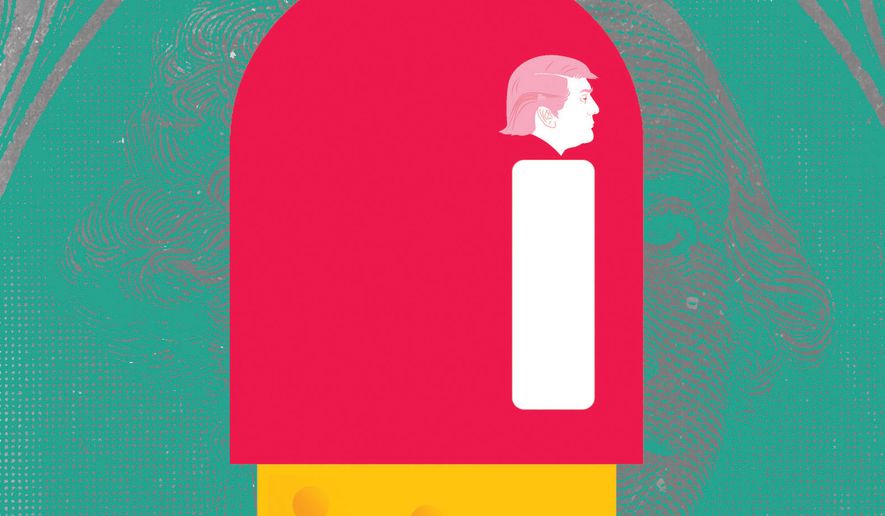OPINION:
The pharmaceutical sector is feeling intense pressure right now, with President Trump’s pledge to impose a 100% tariff on prescription drugs manufactured abroad. This threat, on top of the already worrisome executive order issued in May, has created a situation where companies are cutting deals with the White House to avoid pricing regulations in the form of a new website called TrumpRx.
The president is right to question why other developed countries with strong economies and plenty of wealth get better deals when it comes to drug pricing. He is wrong, though, about imposing top-down mandates to try to remedy the matter.
Yes, medical costs are a real concern in the U.S., as they are one of the primary drivers of personal bankruptcy. However, it is important to note that spending on prescription drugs makes up only about 11% of health care expenditures. It is also worth noting that, when it comes to pharmaceuticals, Americans have greater, quicker access than people in any other country.
According to PhRMA, “Of all new medicines launched since 2012, 85% are available in the United States compared to less than 40%, on average, in Europe.” PhRMA also points out that European patients “wait an average of two years longer for new cancer treatments compared to patients in the United States.”
As for America’s northern neighbors, Canadians have access to just 60% of cancer treatments and 41% of new antiviral and anti-infective treatments, whereas American patients have “access to 94% of new cancer medicines and 86% of new antiviral and anti-infective treatments.”
Generic drugs are also much cheaper in the U.S., and they represent almost 90% of our prescription drug intake.
More access, more availability and more generic options than any other comparable country are nothing to balk at, but the phrase “the grass is always greener” is a truism that applies well to American health care. Affordability is a persistent and valid concern, but more competition and supply — not price fixing — is the answer.
Even if Americans are subsidizing drug development costs for patients everywhere, it is better for that to be the case than to have no development at all.
In the airline business, it’s common knowledge that those who fly first class benefit those who fly in coach, because the bulk of the costs associated with taking off are covered by passengers seated at the front of the plane.
Thanks to first-class passengers, flights can be more frequent and coach fares can be priced lower. This is the same case, in many ways, for the pharmaceutical industry.
America is a top driver of medical innovations, and that is partly because of American interests being a top priority for pharmaceutical firms. The U.S. has so far refrained from setting drug prices, and American consumers who have the purchasing power have proved their willingness to pay top dollar for the drugs they need or desire.
The incentives direct the interests, and the incentives matter.
Drug development is costly and complex with no guarantee of success or a return on investment. According to an economic evaluation study, the mean cost of developing a new drug from 2000 to 2018 was $172 million. This figure increases to $879 million when drug development failures and capital costs are included.
Another study in 2023 found that the overall average research and development costs “to progress a drug from discovery to launch” was around $2.3 billion, with the value of drug sales during its peak year capping at roughly $362 million. These discrepancies between sunk costs and sales generated indicate that pharmaceutical companies will charge whatever the market will bear to try to recoup their costs as quickly as possible, particularly since generic manufacturers will eventually replicate any breakthrough discoveries, as seen with the boom of GLP-1s and compounded versions.
Unlike other products in the consumer market, where trade secrets are kept confidential, pharmaceutical drugs and their active ingredients must be disclosed and can be copied relatively quickly.
As many families on a budget know, acetaminophen is the same regardless of whether it is sold as Tylenol or as a generic brand at Costco.
Quality health care is multifaceted, and price point is only one part of the equation for patients. More options for drugs often lead to lower costs, but lowering costs for drugs doesn’t mean more drug options. As the saying goes, you get what you pay for.
• Kimberlee Josephson is an associate professor of business at Lebanon Valley College and serves as an adjunct research fellow with the Consumer Choice Center. Follow her on X @dr_josephson.




Please read our comment policy before commenting.